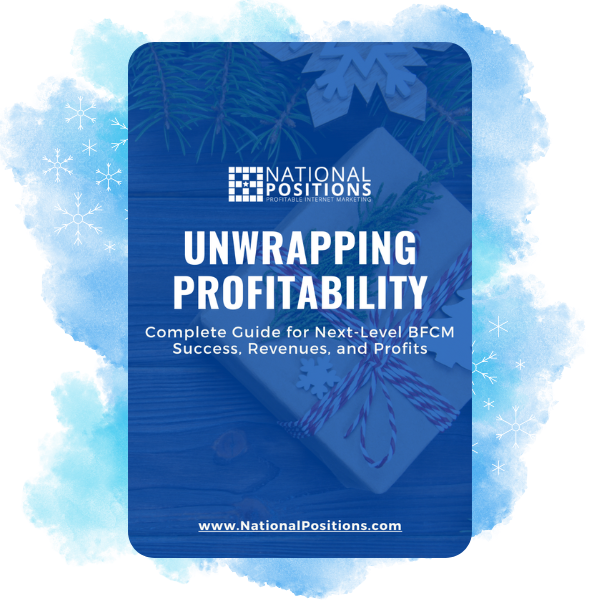 Hey there, marketers, brands, and e-commerce businesses ready to make a massive impact this holiday season! Have you noticed that the 2023 holiday marketing season seems to kick off earlier each year?
Hey there, marketers, brands, and e-commerce businesses ready to make a massive impact this holiday season! Have you noticed that the 2023 holiday marketing season seems to kick off earlier each year?
Yes, it’s a real trend, not just your imagination.
For example, you might have seen Black Friday deals starting in early November, holiday decorations appearing next to Halloween decorations, and email campaigns for holiday sales beginning as early as September.
Yes, the holiday season now includes September!
If you’re in the e-commerce game, whether you are a brand or a media buyer, this is something you can’t afford to ignore. So, let’s dive into why this is happening and how your brand can make the most of it.
Why Are Customers Shopping Earlier?
So, what’s driving this shift to earlier and earlier holiday shopping?
 It’s a blend of economic and psychological factors, and it’s shaking up BFCM marketing 2023 strategies. For instance, people are locking in current prices for specific product categories (like electronics) before potential tariffs or limited availability push prices higher.
It’s a blend of economic and psychological factors, and it’s shaking up BFCM marketing 2023 strategies. For instance, people are locking in current prices for specific product categories (like electronics) before potential tariffs or limited availability push prices higher.
Lest we forget that the last couple of years issues like availability, shipping delays, and a myriad of other factors have primed customers to start their buying journeys earlier than ever.
Consumers are buying (or at the very least starting to research) holiday gifts in September to avoid the December rush and shipping delays. Here are a few other factors to consider:
 – The Data is In: In 2021, about 42% of customers started their holiday shopping in October—this number grew to about 56% in 2022. We expect this trend to continue into September. In other words, the data shows customers are acting earlier than ever.
– The Data is In: In 2021, about 42% of customers started their holiday shopping in October—this number grew to about 56% in 2022. We expect this trend to continue into September. In other words, the data shows customers are acting earlier than ever.
– Less Money on the Table: Between consumer debts and the restarting of student loan payments, there is going to be less expendable income in 2023. So, customers are going to search early and be more discerning with their purchases.
– Plans Change: There have been news rumblings about an uptick in Covid cases. This may cause some holiday travelers to put off travel plans and focus on gifts instead. Again, this shift could spur more early gift research.
The Competitive Landscape
Now, if you’re an e-commerce brand, you’re probably wondering how this affects you. Well, brands like Amazon and Walmart are already launching holiday campaigns in early November.
And let’s not forget those exclusive “members-only” early access deals.
The early bird gets the worm, or in this case, a bigger slice of the holiday shopping pie. Here is some of what we are seeing and what you can do to capitalize:

– Segmentation: Start segmenting your email audiences, covering current customers, dormant customers, and loyal customers at the very least. Prepare to reach out early with exclusive deals for each segment.
– Rebranding: Get your website ready with easily searchable product gift categories like “gifts for mom, dad, kids,” etc. Creating gift bundles or “gifts under $100, $50, $25” sections on your homepage can help fast-track purchases.
– Website Exclusives: If you sell DTC as well as on Amazon, you should consider exclusive website-only deals that are not available on Amazon (or other distribution channels). Give them a reason to buy directly from your e-commerce site.
The Marketing Purchasing Funnel
 Alright, let’s talk marketing. You’ve got to get the word out, right?
Alright, let’s talk marketing. You’ve got to get the word out, right?
Social media campaigns and influencer collaborations are your best friends for creating buzz. And when people are considering where to shop, why not offer some helpful content?
Think gift guides or how-to videos.
Don’t forget to showcase those glowing customer reviews to build trust. And when it’s decision time, a limited-time offer can give that needed nudge, while an easy checkout process can seal the deal.
Here are some additional ways to make a bigger impact:
 – Upsells/Cross-sells: In the checkout process, try adding strategic add-ons that include “at checkout” promo pricing. If you sell hats, feature accessories.
– Upsells/Cross-sells: In the checkout process, try adding strategic add-ons that include “at checkout” promo pricing. If you sell hats, feature accessories.
If you sell earrings, offer a matching necklace or a holiday-ready gift box.
– Feature “Free Shipping”: If you know you can offer free shipping or free shipping with purchases over $100 or $150, make sure you tell your customers this upfront or during checkout.
It is a great way to increase AOV and seal the deal.
– Don’t Leave Carts Abandoned: We hate abandoned shopping carts.
Be sure to have an abandoned cart series of emails (or SMS) ready to go to bring back those “almost customers.”
What Can E-commerce Brands Do?
 So, you’re on board and ready to capitalize on this trend, but where do you start? First off, use your data. Segment your customers, tailor your promotions, and keep an eye on your inventory.
So, you’re on board and ready to capitalize on this trend, but where do you start? First off, use your data. Segment your customers, tailor your promotions, and keep an eye on your inventory.
Personalization is key; almost none of us respond well a one-size-fits-all approach.
Make sure your website is mobile-friendly; a lot of shopping is happening on the go. And don’t forget seasonal promotions.
A themed campaign or a loyalty program can go a long way in making customers feel special and incentivized to shop early.
Put a Bow On It!
Look, the early shopping trend isn’t going away, and it’s something e-commerce brands can’t afford to ignore. By understanding why it’s happening and optimizing your strategies, you’re not just keeping up—you’re setting yourself up for success.
 So, let’s make holiday marketing in 2023 a win-win for everyone: less stress for shoppers and more sales for brands like yours.
So, let’s make holiday marketing in 2023 a win-win for everyone: less stress for shoppers and more sales for brands like yours.
Our team is ready to help! If you are at a loss and asking, “Where should I even start?” National Positions has experts ready to help.
Contact our team today to get your 2023 Holiday marketing on point and primed for success! Be sure to ask for a free copy of our “Unwrapping Profitability” ebook (our complete guide for BFCM and holiday marketing) while you’re at it!